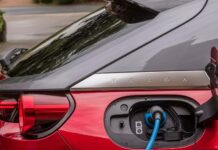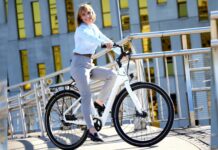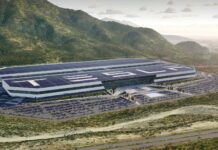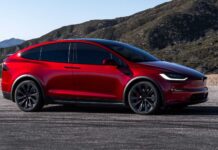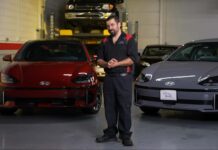[ad_1]
The long-awaited launch of the non-Tesla Supercharging option in the United States has become a reality. The company announced it officially on March 1, 2023.
The US is the 17th market (after 15 European countries and Australia) where non-Tesla Supercharging is available – initially only at select Supercharging stations.
The most important thing is that, in the US, Tesla had to develop a special adapter for its Supercharging stalls (natively equipped with its proprietary plug – NACS) to become compatible with the CCS Combo 1 (CCS1) standard.
In Europe or Australia, new Tesla and non-Tesla electric cars are compatible natively with the CCS Combo 2 (CCS2) connector so there is no compatibility issue (aside from older cars/older chargers).
The solution to making the stalls compatible with the Tesla’s NACS and CCS1 is the “Magic Dock”, spotted for the very first time in the wild, several days ago in New York.
As we can see in the video above, Tesla drivers can use the Supercharging stalls just like before, while non-Tesla drivers can unlock the CCS1 plug attached on top of the NACS plug, using Tesla’s app.
Once charging is complete, non-Tesla drivers need to press a button on top of the CCS1 adapter to unlatch the plug and bring it back to the “Magic Dock”. It’s a really simple and clever idea.

Non-Tesla Supercharger (US) with CCS Combo 1 (CCS1) adapter
Tesla starts in the US with a small number of sites (in California and New York, as far as we know), which can be found in its app. The number of stations with the “Magic Dock” is expected to gradually increase through a retrofit program. Meanwhile, to get some federal funds for the charging infrastructure, Tesla will probably install the “Magic Dock” in all/most of the new Supercharging stations.
“We’re starting with a select number of sites so that we can review the experience, monitor congestion and assess feedback before expanding. Future sites will only be opened to non-Tesla vehicles if there is available capacity.”
It means that the Tesla Supercharging network might soon (in a few years) become the US’ largest public EV charging network (previously it was only available only for a single brand).
Here are screenshots from the video, with some stages of the non-Tesla charging process. The users can find a site and select a particular stall (to unlock its CCS1 adapter). Then accept the rate (prices might vary from station to station, as well as the time of the day/week). There is informative info about the charging process, with the amount of energy dispensed, state-of-charge (SOC), power level, and cost.
Just like in Europe, there are two tariffs for non-Tesla EVs:
- Pay per use: dynamic price per kWh
- Pay per use with an additional $12.99/month subscription: lowered price per kWh
The difference is up to $0.12/kWh, according to Sawyer Merritt.
“Pricing for non-Tesla drivers reflects additional costs incurred to support charging a broad range of vehicles and adjustments to our sites to accommodate these vehicles. Rates vary by site, and you can view charging prices in the Tesla app. The per kWh price to charge can be lowered with a charging membership.”
The last issue with non-Tesla Supercharging is the physical compatibility related to the short charging cable and different locations of the charging inlet in various non-Tesla electric vehicles.
Tesla is aware that there might be issues at some stations and some EVs:
“Certain Supercharger site layouts may not be suitable for some cars. Please do not obstruct other cars by parking over the lines if the cable cannot comfortably reach your car.”
[ad_2]
Source link


